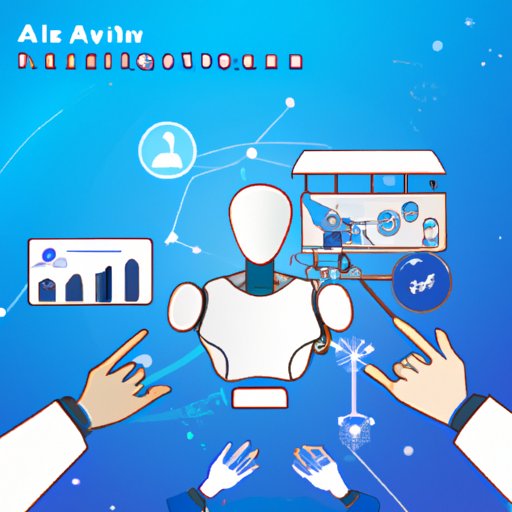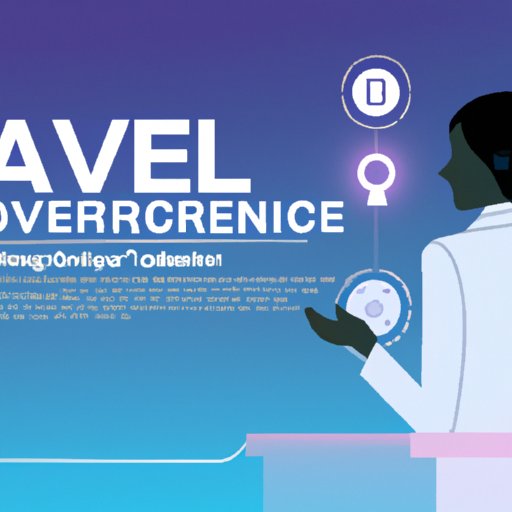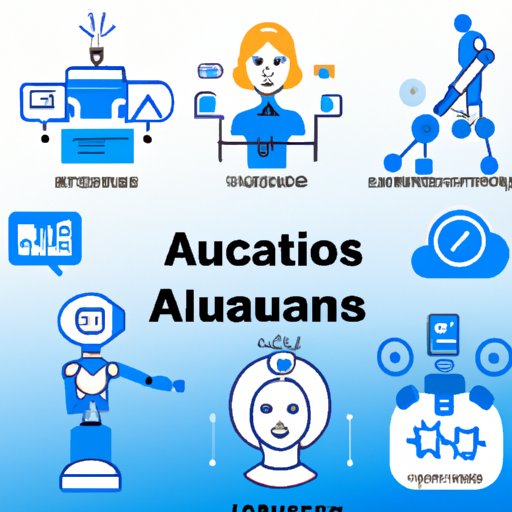Introduction
Artificial Intelligence (AI) is a type of computer technology that enables machines to simulate human intelligence and behavior. AI has become increasingly popular in recent years as businesses look to leverage its capabilities to improve efficiency, increase profits, and gain competitive advantages. In this article, we’ll explore how to incorporate AI into your business and the potential benefits and obstacles associated with the process.

Use AI to Automate Business Processes
AI can be used to automate various business processes, such as payroll, accounting, inventory management, and customer service. For example, AI-powered chatbots can be used to quickly and accurately respond to customer inquiries, freeing up time for customer service representatives to focus on more complex tasks. AI-driven automation also helps to eliminate manual errors, resulting in greater accuracy and improved efficiency.
Using AI to automate business processes can lead to a number of benefits, including cost savings, improved customer satisfaction, and increased productivity. According to a Deloitte survey, over 60% of respondents reported significant cost savings when using AI to automate processes. Additionally, AI-driven automation can help to reduce customer wait times, leading to improved customer satisfaction.
However, there are some potential obstacles to consider when utilizing AI to automate processes. For example, AI-driven automation requires an upfront investment of time and money to develop, implement, and maintain. Additionally, it may require additional training and resources to ensure that employees are able to effectively use and manage the automated systems.

Leverage AI to Enhance Customer Service
AI can also be used to enhance customer service. AI-powered chatbots can provide customers with personalized support and advice, while AI-driven sentiment analysis can be used to identify customer trends and preferences. Additionally, AI-driven automation can be used to quickly and accurately respond to customer inquiries, helping to reduce customer wait times and improve customer satisfaction.
Using AI to enhance customer service can lead to a number of benefits, such as increased customer loyalty and improved customer retention. According to a Salesforce study, 78% of customers said they were more likely to purchase from a company if they had a positive experience with their customer service. Additionally, AI can help to reduce customer service costs by automating common customer service tasks.
However, there are some potential obstacles to consider when leveraging AI to enhance customer service. For example, AI-driven customer service solutions may require additional training and resources to ensure that employees are able to effectively use and manage the systems. Additionally, AI-driven sentiment analysis can be prone to bias and errors, so organizations must take steps to ensure that the data used is accurate and unbiased.
Utilize AI for Predictive Analytics
AI can also be used for predictive analytics. Predictive analytics uses AI to analyze data and make predictions about future outcomes. For example, AI-driven predictive analytics can be used to forecast customer demand, identify new market opportunities, and optimize pricing strategies. Additionally, AI-driven analytics can help to uncover hidden patterns and insights that may not be visible to the naked eye.
Using AI for predictive analytics can lead to a number of benefits, such as improved decision-making, increased profitability, and reduced risk. According to a McKinsey study, companies that use predictive analytics are three times more likely to outperform their peers. Additionally, AI-driven analytics can help to reduce costs by optimizing processes and eliminating wasteful spending.
However, there are some potential obstacles to consider when utilizing AI for predictive analytics. For example, AI-driven analytics require large amounts of data to be effective, which may require additional investments in data collection and storage. Additionally, AI-driven analytics can be prone to bias and errors, so organizations must take steps to ensure that the data used is accurate and unbiased.
Implement AI-driven Chatbots
AI can also be used to develop AI-driven chatbots. Chatbots are AI-powered virtual assistants that can interact with customers via text or voice. AI-driven chatbots can help to quickly and accurately respond to customer inquiries, freeing up time for customer service representatives to focus on more complex tasks. Additionally, AI-driven chatbots can provide customers with personalized support and advice, as well as upsell and cross-sell products and services.
Using AI to develop chatbots can lead to a number of benefits, such as improved customer satisfaction, increased sales, and reduced customer service costs. According to a HubSpot study, 68% of customers said they prefer using chatbots for customer service because it is faster and easier than speaking to a representative. Additionally, AI-driven chatbots can help to reduce customer service costs by automating common customer service tasks.
However, there are some potential obstacles to consider when implementing AI-driven chatbots. For example, AI-driven chatbots require additional investments of time and money to develop, implement, and maintain. Additionally, AI-driven chatbots may require additional training and resources to ensure that employees are able to effectively use and manage the systems.
Create AI-Powered Digital Assistants
AI can also be used to create AI-powered digital assistants. Digital assistants are AI-driven virtual agents that can interact with customers via text or voice. AI-driven digital assistants can help to quickly and accurately respond to customer inquiries, freeing up time for customer service representatives to focus on more complex tasks. Additionally, AI-driven digital assistants can provide customers with personalized support and advice, as well as upsell and cross-sell products and services.
Using AI to create digital assistants can lead to a number of benefits, such as improved customer satisfaction, increased sales, and reduced customer service costs. According to a Gartner study, 79% of customers said they prefer using digital assistants for customer service because it is faster and more convenient than speaking to a representative. Additionally, AI-driven digital assistants can help to reduce customer service costs by automating common customer service tasks.
However, there are some potential obstacles to consider when creating AI-powered digital assistants. For example, AI-driven digital assistants require additional investments of time and money to develop, implement, and maintain. Additionally, AI-driven digital assistants may require additional training and resources to ensure that employees are able to effectively use and manage the systems.
Develop AI-Driven Recommendation Engines
AI can also be used to develop AI-driven recommendation engines. Recommendation engines are AI-powered algorithms that can analyze customer data and make product or service recommendations. AI-driven recommendation engines can help to personalize customer experiences, increasing customer engagement and sales. Additionally, AI-driven recommendation engines can help to uncover hidden patterns and insights that may not be visible to the naked eye.
Using AI to develop recommendation engines can lead to a number of benefits, such as increased sales, improved customer satisfaction, and reduced marketing costs. According to a Forrester study, 70% of customers said they are more likely to purchase from a company if they receive personalized recommendations. Additionally, AI-driven recommendation engines can help to reduce marketing costs by automating common marketing tasks.
However, there are some potential obstacles to consider when developing AI-driven recommendation engines. For example, AI-driven recommendation engines may require additional investments of time and money to develop, implement, and maintain. Additionally, AI-driven recommendation engines can be prone to bias and errors, so organizations must take steps to ensure that the data used is accurate and unbiased.
Conclusion
In conclusion, AI can be used to automate processes, enhance customer service, create predictive analytics, develop chatbots, create digital assistants, and develop recommendation engines. Utilizing AI can lead to a number of benefits, such as cost savings, improved customer satisfaction, increased sales, and reduced risk. However, there are some potential obstacles to consider when incorporating AI into your business, such as the upfront costs and additional training and resources required.
By understanding how to incorporate AI into your business, you can unlock the potential of AI and reap the rewards of increased efficiency, improved customer satisfaction, increased profits, and reduced risk. With the right implementation strategy, AI can be a powerful tool to help your business succeed.
(Note: Is this article not meeting your expectations? Do you have knowledge or insights to share? Unlock new opportunities and expand your reach by joining our authors team. Click Registration to join us and share your expertise with our readers.)
